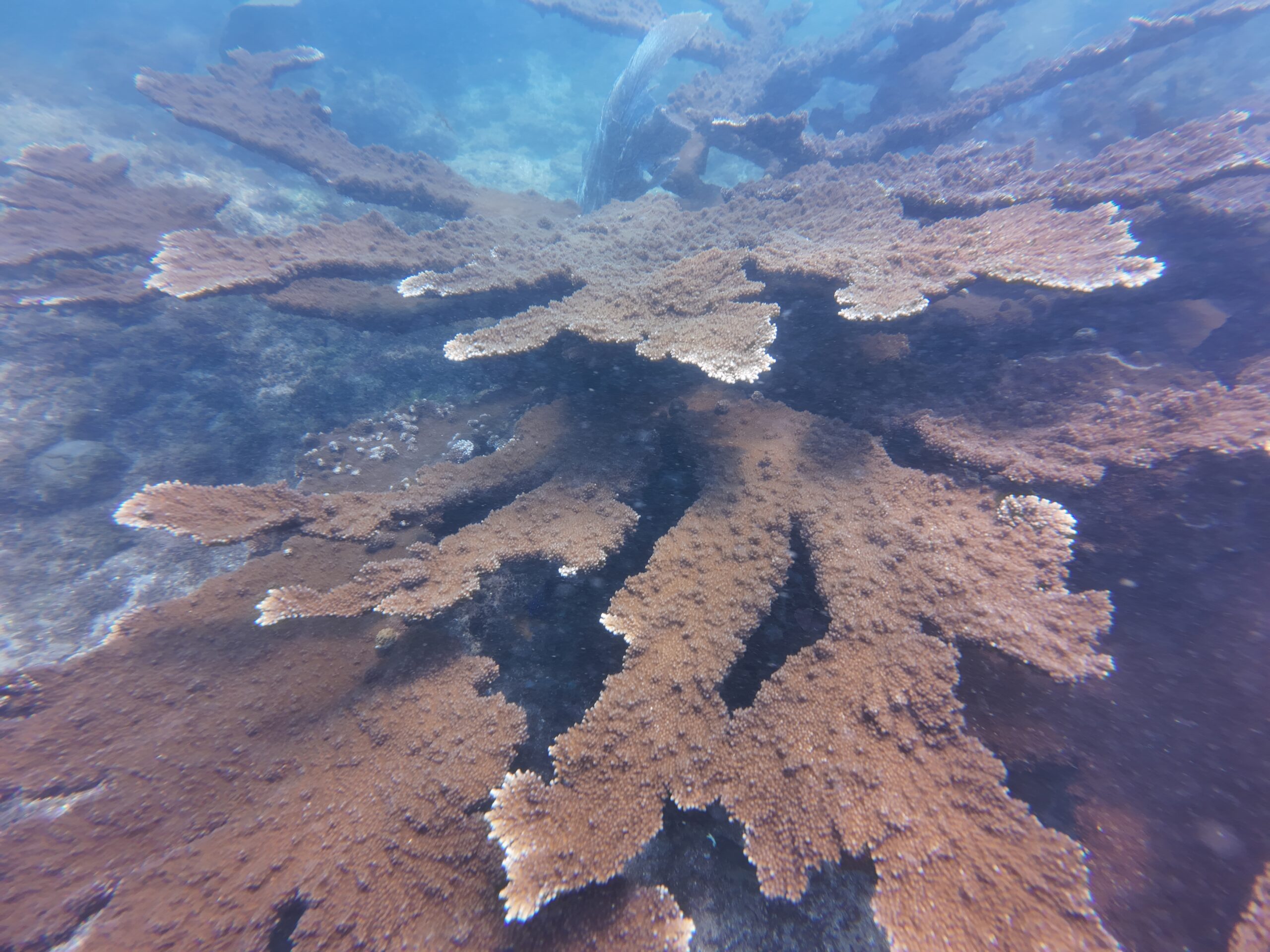
The importance of Tela’s Acropora corals can not be overstated.
After I returned from Honduras, I received an email from Derek Manzillo, the head of NOAA’s Coral Reef Watch. Coral Reef Watch is an incredible program that uses sateallite imagery to produce forecasts of ocean heatwaves capable bleaching coral. Those maps give reef managers around the world time to prepare, alerts them to where they should monitor, and even provides guidance on where to decrease fishing and tourism pressures to give corals the best chances of survival. It’s also a historical database of ocean conditions that we can use to track changes. That’s all good.

Here’s the bad. As I write this, NOAA is facing a proposed 75% budget cut, one that will severely compromise the United States’ role as a leader in ocean science. I spoke on the steps of the Texas State Capitol during the Stand Up for Science rally. I gave reasons why the scientific infrastructure of our country, especially NOAA and programs like Coral Reef Watch, need to be protected for the inestimable value they provide to all of us. Here’s a link if you want to see my whole speech.
At the same time, coral reefs around the world are experiencing the Sixth Mass Bleaching, an ongoing event that started in 2023 that’s impacted over 80% of all corals worldwide. In a statement to the Guardian, Derek said, “The fact that so many reef areas have been impacted, including purported thermal refugia like Raja Ampat and the Gulf of Eilat, suggests that ocean warming has reached a level where there is no longer any safe harbor from coral bleaching and its ramifications.”
In his email message, Derek was looking for safe harbors. He asked if I could send a report of Acropora mortality and/or bleaching in Tela over the last two years for inclusion in a database of on-the-ground monitoring to back up the satellite data.
I wrote back that there has been no mortality or bleaching. I had just been in the Acropora gardens and there were no changes.
Derek responded quickly. “…this certainly seems to be a vital location. This is pretty much the first place in the Caribbean where the narrative hasn’t been one of a local or near-local extinction of Acropora since 2023…..”

Healthy Acropora palmata from March 2025
He confirmed the need to build a biobank to secure these unusual animals, as well as to perform a translocation experiment moving fragments of coral from Tela to test whether they maintain their resilience in other places. These are two of Tela Coral’s top scientific priorities and we are glad to know that they align with what Derek sees as critical. That’s good.
However, the news from Tela was not one of universal health. While the Acropora are–against all odds–healthy, I did see more disease than before on the outer reef. With the exception of the mass mortality in 2023, we only observed occasional bleaching or signs of sickness.
So, here is the bad, and it’s important to document it. A number of colonies showed a line of white death across their surface. We aren’t sure what the disease is. A terrible disease called Stony Coral Tissue Loss Disease or SCTLD has been marching across the Caribbean since 2014. It attacks about twenty species of mounding and boulder corals. Over a year ago, SCTLD arrived in nearby Roatan. I shared these photos with scientists at the University of Texas and the University of Miami, and whether this is SCTLD or not remains uncertain. Coral diseases are hard to confirm and the pathogens, including those that cause SCTLD, have not been identified.
Regardless of what it is, perhaps it was inevitable that disease would come to Tela. It escaped for so long.

But on the same reef, there were many colonies that remain healthy. Some species we didn’t expect to be healthy were. See the plate coral in the lower right corner with beautiful green valleys. That’s Mycetophyllia, one we weren’t sure would be resilient, and it looked great. It’s important to document this kind of resilience as well. We will continue to watch, and hope, that some individuals of these species have, like Tela’s Acropora, unusual ability to survive.
But the threat of disease really brings home the urgency of our work. The faster we can get a biobank built, the faster we can protect these incredible endangered animals about which we still only have the slightest understanding. If you would like to support our crucial scientific goals, please consider a tax-free donation. It would be really good.

